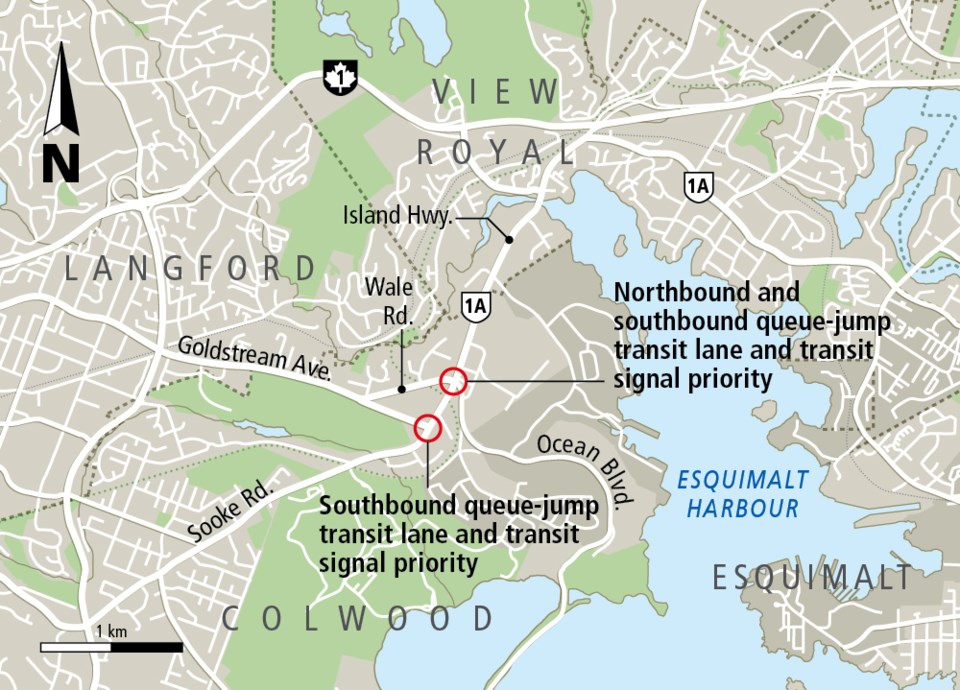B.C. Transit will spend $250,000 to complete planning on an estimated $2.32 million for transit queue-jumping initiatives through Colwood.
“Once we’ve got the plan, then we’re in a position to utilize any [funding] opportunities that come along — grants or whatever,” said Greater Victoria Transit Commission chair Susan Brice, calling the expenditure “the next right step.”
“We’re on target and while we all would like things to be able to move more quickly, we’re pretty confident that from an incremental point of view we have taken the right steps,” Brice said.
Transit commissioners approved in principle the planning funds as part of the 2019-20 budget at their regular meeting Tuesday with an eye to undertaking construction as part of the 2020-2021 budget cycle. The meeting was short of quorum, so Brice hopes to ratify the decision through a telephone conference call.
The cost estimates include construction, buying property, transit signal priority equipment, traffic management, engineering and a contingency of 20 per cent.
The planned work includes:
• Southbound queue-jump transit lane and transit signal priority at Goldstream Avenue and the Island Highway/Sooke Road intersection, $800,000 estimate.
• Northbound and southbound queue-jump transit lane and transit signal priority at Wale Road and the Island Highway, $1.2 million estimate.
• Equipping 55 buses with transit signal priority equipment, $325,000 estimate.
Community engagement is planned to inform parties that would be affected.
The projects on the Island Highway are part of a transit-priority corridor that is planned to stretch from downtown Victoria to the West Shore. In the works since 2014, it is starting to make a difference for commuters.
The northbound Douglas Street priority bus lane from Tolmie Avenue to the Burnside Road West/Interurban Road area, which opened this month, is saving bus passengers up to 10 minutes during peak travel periods, says the B.C. Ministry of Transportation.
The new 2.3-kilometre section of bus lane is part of a system that also includes a southbound priority lane that now runs from Tolmie to Fisgard Street. The southbound lane will be extended to the Burnside/Interurban area in a project due for a spring 2019 start. B.C. Transit is working with the ministry on the plan.
B.C. Transit says its buses carry 40 per cent of people travelling the Douglas Street corridor at peak times, yet the vehicles make up just three per cent of the traffic.
Meanwhile, commissioners approved in principle an additional 20,000 hours of transit service, Brice said. The service expansion will see an additional 2,200 hours of late night weekend bus service; an additional 13,000 hours on the “frequent-transit network” crosstown routes, and an additional 700 hours to improve summer-weekend connections to ferries.



